https://www.gatewayfamilyservices.org/
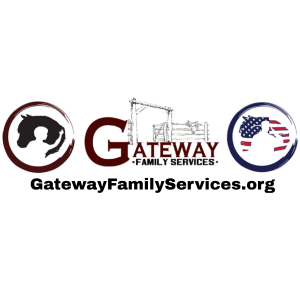
Gateway Family Services of Illinois
7757 US Route 136
POTOMAC, IL 61865
Mailing Address:
7757 US Route 136
POTOMAC, IL 61865
Phone: 217-488-8006
MAKE AN INQUIRY
View our WEBSITE
EIN: 82-5497238Founded: 2019
Profile Last Updated October 3, 2025
Public Charity
MISSION & PROGRAMS
Mission:Gateway Family Services of Illinois, a 501(c)3 organization, exists to help heal and transform the people of Central Illinois by providing individualized, intensive and innovative counseling services that include trauma focused-equine assisted psychotherapy and Eye Movement Desensitization & Reprocessing (EMDR), art, play, sand and nature therapies to individuals and families.
Our organization conducts Equine Assisted Services in accordance with the EQUUS Foundation Guidelines on Qualifications of Organizations Conducting Equine Assisted Services (EAS).
Our organization provides outreach and/or public education programs involving horses.
Over 50% of our total programs and services are equine-related.
Our organization is directly responsible for the care and shelter of equines involved in our programs.
Our organization does not CURRENTLY use satellite, overflow, foster, and/or outreach facilities.
Please describe what steps your organization takes to ensure that:
1) all interactions between your equines and people are mutually beneficial and conducted in accordance with the Guidelines for Human-Equine Interactions stated below;
2) all equines in the care of our organization and/or equines that participate in the organization's program have access to clean drinking water at all times; nutritious food in sufficient quantity, including natural forage such as pasture grass and/or hay; appropriate veterinary, farrier, and dental care; shelter and protection from the weather; sufficient safe space to move around comfortably on a daily basis; and daily opportunity to freely interact and have contact with other equines:
1. Our agency's philosophy is based on the ideas of Carl Rogers (1942), a prominent figure in humanistic psychology, who advocated the principle that “in any relationship, if it is not good for both, it is not good for one.” This emphasizes the importance of mutual well-being and the establishment of healthy, interconnected relationships. We do not compromise the well-being of our equine partners for the sake of our work. Our focus is on ensuring that our efforts also benefit our equine partners. To help guarantee their well-being, we monitor them closely for signs of distress, burnout, or any other indications that the work may be becoming too much. We utilize the following questions from the Handbook for Children with Complex Trauma and Dissociation in the chapter on Animal Assisted Therapy, authored by our CEO and founder, Michael Remole, as guiding principles when partnering with the equines:
 Am I allowing the animal to seek relief from the stress of the session?
 Is the animal free to naturally exhibit their innate behaviors?
 Does the session or intervention respect the animal’s autonomy by giving them the space to decline participation?
 Does this principle of relationship positively influence other relationships?
 Am I creating room within the session to explore the animal’s communication?
 Am I disregarding any cues from the animal for the sole benefit of the client?
2. Our equines are well cared for and come into their stalls at night, where they have access to buckets of water. This arrangement allows our barn manager to closely monitor the eating and digestive habits of the horses for any signs that something is wrong. In their stalls, they receive Total Equine, hay, and water twice a day. Their stalls are properly cleaned daily, with a complete clean-out taking place every Saturday. During the day, our horses are out on 10 acres of pasture, and we provide 4 round bales of supplemental hay. Our farrier provides proper hoof care every 6 weeks. Our dentist comes twice a year and does a check of all equines, and every equine has their teeth floated as needed. Our agency also has an equine chiropractor and massage therapist out at least once a year. If a horse shows any signs of discomfort, the agency will have them out more often.
Equine Assisted Services (EAS):
Our organization provides the following Equine Assisted Services (EAS):
Psychotherapy/Counseling
Personal Development Learning
3: Total number of Equine Assisted Service Providers at Gateway Family Services of Illinois
1 Gabby Remole, LCSW
FACILITY PARTICIPATION:
Gateway Family Services of Illinois
RELATIONSHIP: Employee
SERVICES PROVIDED:
Psychotherapy/Counseling
Personal Development Learning
DEGREES, LICENSES AND/OR CERTIFICATIONS
Trained in EAGALA
Trained & current trainer for Natural Lifemanship (2013-Present).
Licensed Clinical Social Worker--licensed in 2013.
2 Julia Pettersen, LSW
FACILITY PARTICIPATION:
Gateway Family Services of Illinois
RELATIONSHIP: Employee
SERVICES PROVIDED:
Personal Development Learning
DEGREES, LICENSES AND/OR CERTIFICATIONS
Trained Natural Lifemanship (2022)
Licensed Social Worker--licensed in 2023.
3 Michael Remole MA, LCPC, NCC, I/ECHMHC
FACILITY PARTICIPATION:
Gateway Family Services of Illinois
RELATIONSHIP: Employee
SERVICES PROVIDED:
Psychotherapy/Counseling
Personal Development Learning
DEGREES, LICENSES AND/OR CERTIFICATIONS
Trained in EAGALA (2009 & 2010)
Trained in E3A (2014)
Trained & was a trainer for Natural Lifemanship (2015-2018).
Licensed Clinical Professional Counselor--licensed in 2012.
National Board of Certified Counselors
Mentor with the Neurosequential Model of Therapeutics.
Overview of our programs involved with providing EAS to individuals with special needs:
Our agency provides Trauma-Focused Equine Assisted Psychotherapy (TF-EAP) sessions to individuals of all ages. Our youngest client has been 2 years old, and our oldest client is 94. We offer weekly individual and group TF-EAP sessions, with group services specifically supporting Veterans from the community and the local Illiana Health Care System. The agency also offers intensives (2-3 days of focused clinical work) and retreats, providing the same services as during our weekly sessions.
Our agency specializes in helping those who have experienced trauma, with the majority of our clients diagnosed with PTSD.
Many individuals require intensive support and services to aid in their recovery and healing. Gateway Family Services of Illinois offers TF-EAP to enhance relationships and facilitate healing from trauma. We incorporate the Neurosequential Model of Therapeutics (NMT) developed by Bruce D. Perry, MD, PhD, as well as the Natural Lifemanship model of trauma-focused equine-assisted psychotherapy. These approaches are grounded in the neuroscience of both human and horse brain development, the effects of trauma, and the significance of relationships in the healing process. Our sessions are designed based on evidence-based principles to establish healthy, connected relationships that assist individuals and their families. This comprehensive approach is dedicated to supporting individuals in their healing and recovery.
Moreover, the agency hosts retreats that provide EAL activities that focus on team building, relationships, and connection with the horses. Groups that have participated include local schools, caseworkers from child welfare agencies, the Office of the State's Attorney, and the University of Illinois School of Social Work.
Outreach and/or Public Education:
Gateway Family Services integrates mounted work into sessions to help individuals and families enhance self-regulation skills, build relationships between horse and human, and provide a platform for processing trauma while strengthening human relationships. Individuals who have experienced trauma—such as abuse, neglect, combat, or natural disasters—often exhibit compromised brain functionality due to disrupted brain connections. This can lead to difficulties in emotional regulation, impulse control, and coping with even minor stressors.
The Rhythmic Riding Groups help clients experience an appropriate dose of stress while offering an opportunity to practice self-regulation skills and strategies. During the group, clients select music they enjoy, and a playlist is created for each session. The professionals curate this playlist to align with clients' levels of activation, using slow-paced music for relaxation and faster-paced music to energize. Throughout the session, clients partner with their horses to ride to the beat of the music. This requires focus and intentionality from the rider, allowing opportunities to manage frustrations and apply self-regulation strategies.
Gateway Family Services leverages the rhythmic, patterned, and repetitive movements inherent in horseback riding to establish, enhance, and reorganize brain connections, improving the brain's capacity to manage emotions and impulses effectively. The horse's rhythmic movements facilitate the healing of trauma-induced brain impacts until the individual can independently maintain that rhythm.
Gateway Family Services of Illinois also takes miniature horses off-site to provide TF-EAP sessions in school settings as well. The school district with which the agency partners has offered a dedicated space inside the school that allows the miniature horses to enter freely, where they can roam without their halters. This setting enables students to engage in sessions similar to those conducted at the barn, ensuring that the horses have the choice to move away from the session if it becomes overwhelming for them.
The miniature horses also travel to our local VA and nursing homes, where they spend time connecting with patients residing in the care facilities, including most recently, visits at our local trauma hospital.
Gateway Family Services of Illinois also takes miniature horses off-site to various community events such as the AMBUCS 100th anniversary, parades, or to church fall parties. These events are more focused on simply connecting others with the minis and explaining a little more about the services provided and ways for individuals to get involved with the organization.
The agency also offers community groups, including initiatives like Project Success, where students learn about leadership and work with the horses through EAL activities.
Research/Medical Use of Equines:
Our organization has never made, and would not ever consider making, equines available for research studies or medical training that involves invasive procedures and/or that which may cause pain or suffering to the equine.
Religious Affiliation:
Our organization does not promote religious education, religious purposes, or a specific religious faith or use donations for religious education or religious purposes; require participants to be of a certain faith; require participation in religious, instruction, activities or services; or require participation in prayer, worship, religious instruction or other religious activities as a condition of receiving social or secular services offered.
Auction Donation:
Our organization has never allowed, or would not consider allowing, an equine to be sold, transferred, released, or otherwise placed into possession of any person or organization that would cause or allow the equine to be sold at auction for slaughter.
Our Programs/Activities that are not equine-related and/or involving animals other than equines:
We provide a variety of mental health services, including EMDR, Sand, Art, and Nature-based therapies. While engaging in these activities, clients will also encounter our barn cats and dogs on the property. Our professional staff also includes a Psychiatric Nurse Practitioner who provides medication management for those seeking medicine to support their mental and emotional well-being.
POLICIES: INTAKE, ASSESSMENT & TRAINING
Prior to a horse being accepted and/or arriving at the facility, the organization has the following policies in place:The owner of a potential equine is interviewed over the phone or in person prior to seeing the equine
The equine is evaluated at its place of residence
If health records are not available or are out-of-date, our veterinarian will administer appropriate vaccinations
A health certificate signed by a veterinarian and dated no more than seven days prior to arrival is provided to our organization either prior to or upon arrival of the equine attesting to the health status of the equine
The owner completes an application/contract which constitutes the agreement between the owner and our organization when the equine is acquired from the equine's owner other than by seizure or by abandonment
The owner is financially responsible for the shipping of the equine to and from the organization
Trial Period: Check all that apply:
Equines are not taken on trial
Upon intake, the organization has the following quarantine policy in place:
The equine is not quarantined
The equine is confined to a designated and separate area for isolation and quarantine at the facility for a prescribed period of time
The equine is confined to a designated and separate area for isolation and quarantine off-site for a prescribed period of time
The typical length of quarantine is: Horses are not quarantined
Following arrival of the equine at the facility, the following is performed:
Physical examination to include temperature, pulse and respiration by a trained staff member upon arrival
Physical examination to include temperature, pulse and respiration by a veterinarian upon arrival
A Henneke Body Conditioning Score or other body conditioning score is assigned by a veterinarian upon arrival
A Henneke Body Conditioning Score or other body conditioning score is assigned by a trained staff member upon arrival
Photographs are taken of each equine upon arrival at the facility and kept with the equine's health records
Physical examination by a farrier
Physical examination by a dentist
The equine is microchipped if the equine has not been microchipped
Horses are assessed for following skills and behaviors:
Retrieval from a pasture/paddock
Leading with a halter and lead rope
Temperament, disposition and attitude, such as rated from very calm to very high spirited
Saddling
Bridling
Loading onto and unloading off a trailer
Mounting and dismounting
Riding at the walk
Riding at the trot
Riding at the canter
Riding by a beginner and/or unbalanced rider
Known vices, i.e., cribbing, biting, kicking, weaving, stall walking, etc
Grooming
Bathing
Tolerance to multiple handlers at the same time
Lunging
Jumping
Driving (Pulling a carriage)
Tolerance to unusual objects and loud noises
Clipping
Our organization has the following policies and procedures in place pertaining to the ongoing assessment of horses in its care:
Physical examination by a veterinarian at least annually
Vaccinations are administered at least annually
Photographs are taken of each equine annually and kept with the equine's health records
Equines at our facility may be treated by an equine chiropractor
Equines at our facility may be treated by an equine acupuncturist
Equines at our facility may be treated by an equine massage therapist
Equines at our facility may be treated by an equine nutritionist
The Henneke Body Condition score or other body conditioning score is updated at least annually by the veterinarian
The Henneke Body Condition score or other body conditioning score is updated at least annually by a trained staff member
Photographs are taken of each equine monthly and kept with the equine's health records
Our organization has the following policies and procedures in place pertaining to the weight-carrying or workload capabilities of horses/equines that are ridden in our care:
Our organization evaluates the weight-carrying and workload limitations for each equine that is ridden at least annually
Our organization maintains a written record of the weight-carrying and workload limitations for each equine that is ridden
Our organization does not evaluate the weight-carrying and workload limitations for each equine that is ridden
No equines are ridden; not applicable
The following variables are considered in determining the weight-carrying and workload limitations for each equine that is ridden:
Equine age, weight, breed, body condition, fitness, balance, health and soundness
Equine conformation to include the top line, length of back, strength and width of loin, bone density (measured by the circumference of the cannon bone just below the knee)
Size, shape, condition and angle of the hooves
Participant weight, height, body proportions, balance, fitness and riding skills as well as behavioral issues and safety concerns
Weight and proper fit of the saddle and other equipment
Terrain and footing in the working environment
Duration and frequency of working sessions, as the frequency with which an equine is subjected to maximum weight carrying and/or workload
Nature and pace of work, repetitive or varied, radius of turns, degree of incline and regularity of footing when equine is subject to maximum weight-carrying capacity
Temperature and/or weather conditions
Seasonal impact on the equines' workload and weight-carrying capabilities and limitations
Our organization does not evaluate the weight-carrying and workload limitations for each equine that is ridden
No equines are ridden; not applicable
Horses provided formal training (groundwork or riding): As needed; no set schedule
POLICIES: BREEDING
The organization has the following policies related to breeding and stallions:Our organization does not conduct breeding of equines owned or under the care of our organization.
Our main facility where our organization conducts its programs does NOT breed equines.
One or more of the facilities where our organization conducts its programs, including foster/temporary care facilities, breeds equines
One or more of the facilities where our organization conducts its programs, including foster/temporary care facilities, are permitted to house stallions
POLICIES: EUTHANASIA
The organization has the following policies related to euthanasia:Our organization will never have an equine euthanized for space
Our organization will have an equine euthanized upon the recommendation of the veterinarian if the equine is a threat to itself, other equines, or people
Our organization will have an equine euthanized upon the recommendation of the veterinarian after all reasonable treatment options have been explored
Euthanasia is done at the veterinarian's facility
Disposal of the carcass is handled within 24 hours
Our organization will never have an equine euthanized under any circumstances
Euthanasia is done on site when possible to decrease trauma from transport
The following are authorized to administer the procedure for your organization in accordance with state laws:
Veterinarian
A certified euthanasia technician
Employee of animal control shelter or humane society with appropriate training
Veterinary student under the supervision of a licensed veterinarian
Senior staff with appropriate training
Not applicable. Our organization prohibits euthanasia under any circumstances
Additional information about our euthanasia policies and practices:
Our agency will only euthanize an equine under the guidance of the veterinarian and is only done in the situation of extreme illness or quality of life for the equine. The decision is not based on finances or the need for space.
POLICIES: RE-HOMING
Re-homing Agreement not applicable.Our organization has the following re-homing (adoption/purchase) policies and procedures in place:
Our organization does not have the authority to transfer ownership and/or does not own any of the equines involved with our programs.
Our organization has the following policies and procedures related to horses that need to be retired, are no longer able to contribute to the mission of the organization, and/or are no longer manageable:
Our organization does not have the authority to transfer ownership and/or does not own any of the equines involved with our programs.
Equines may remain at our organization for their lifetimes
Equines may be returned to their owners
In the case an equine is unmanageable and demonstrates repeated dangerous behaviors, the equine may be euthanized upon the recommendation of the veterinarian
In the case an equine is unsound and/or unhealthy and cannot be treated to relieve suffering, the equine may be euthanized upon the recommendation of the veterinarian
The organization will accept financial responsibility for equines in the current care of the organization that need to be retired or are no longer able to contribute to the mission of the organization if all alternatives have been explored to find the equine an appropriate placement and space is not available for the equine to remain at the organization.
Equines may be found suitable homes by our organization
Equines may be sent to auction
If a suitable home cannot be located within 12 months, the equine may be euthanized
Additional information about our rehoming policies and practices:
All our horses are leased.
EQUINE CARE & SHELTER/FACILITY INFORMATION
Our organization does not CURRENTLY use satellite, overflow, foster, and/or outreach facilities.Total facilities at which our organization cares for and shelters horses used in our programs: 1
Gateway Family Services of Illinois
7757 US Route 136 POTOMAC IL 61865
Currently operational
Total number of horses/equines currently involved with your programs, under your care, and/or owned by your organization at this facility: 21
Total number of horses at this facility NOT INCLUDING those counted above: 0
Maximum capacity of horses at this facility: 21
Does your organization own, lease or use a part of this facility? Lease
Provide the contact information for the individual or organization responsible for investigating abuse in the county where the facility is located, including mailing address, email address, and phone information.
Vermilion County Animal Shelter Ryan Goodner, Director 14775 Catlin / Tilton Road Danville, IL 61833 ryan.goodner@vercounty.org 217-431-2660
Does your organization conduct Equine Assisted Services (EAS) at this facility in accordance with the EQUUS Foundation Guidelines on Qualifications of Organizations Conducting Equine Assisted Services (EAS)? Yes
Total number of Equine Assisted Service Providers AT THIS FACILITY, including instructors, specialists, therapists, counselors, coaches and/or facilitators (full-time, part-time, volunteer, independent contractors, and/or providers accompanying clients) that conduct Equine Assisted Services (EAS) in accordance with the EQUUS Foundation Guidelines on Qualifications of Organizations Conducting Equine Assisted Services (EAS) AT THIS FACILITY: 3
Equine Assisted Service Providers Assigned to this Facility: (see Equine Assisted Service Provider Section below for details)
1. Gabby Remole, LCSW
2. Julia Pettersen, LSW
3. Michael Remole MA, LCPC, NCC, I/ECHMHC
Grounds: Gateway Family Services of Illinois (*Main) Currently operational This section is required.
Total acreage dedicated specifically to the horses: 8
Our organization has use of the following at this facility:
Structures/Barns: 1 Run-in sheds: 0
Pastures: 2 Paddocks/Pens/Turnout Areas: 2
Uncovered Outdoor Rings: 1 Covered Outdoor Rings: 0 Indoor Rings: 1
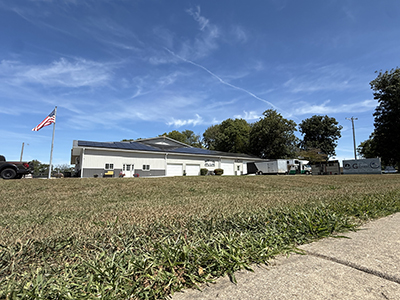

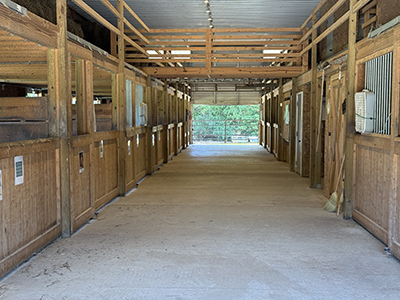
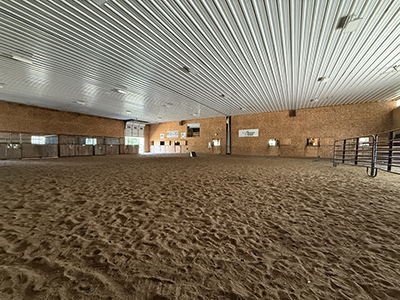
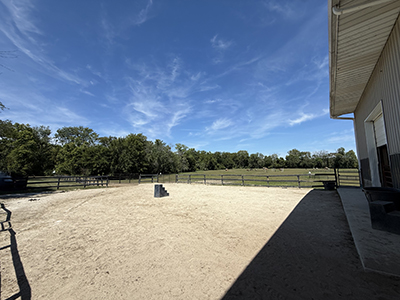
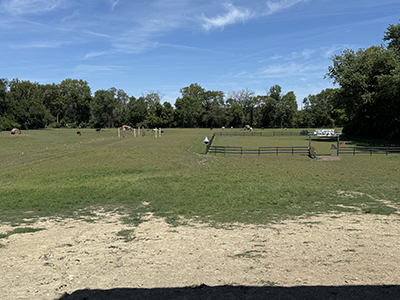
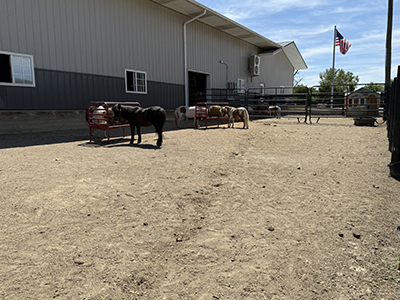
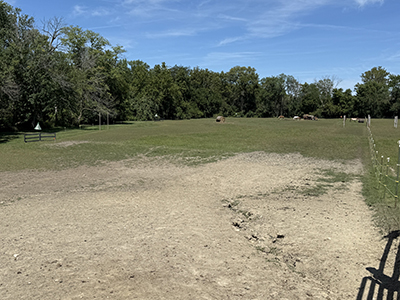
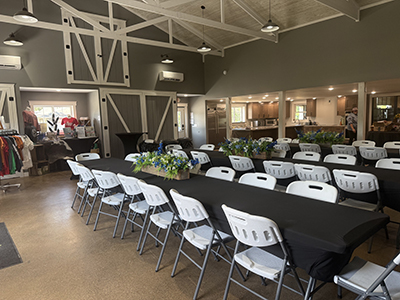
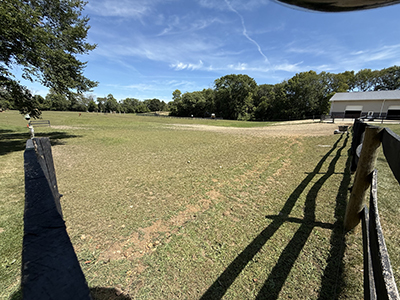
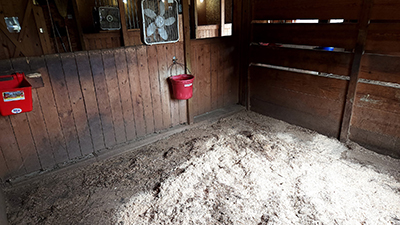
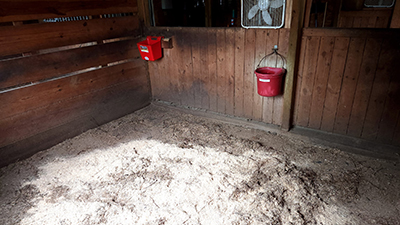
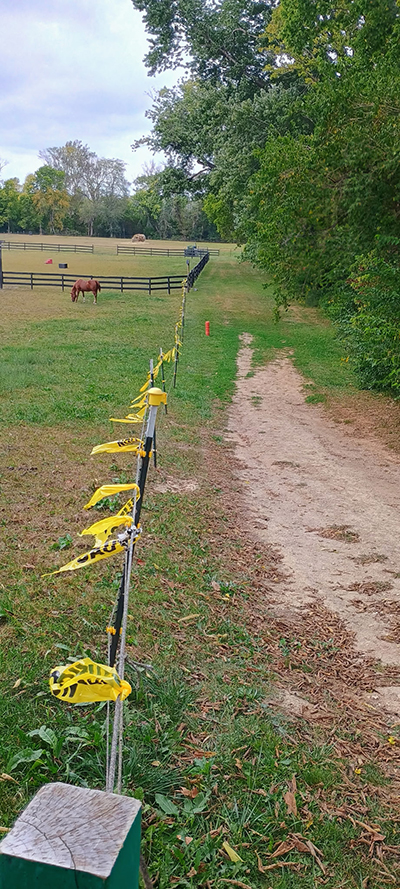
Are the organization's rules, restrictions and warnings (signage) conspicuously posted in easily accessible locations? Yes
Are the organization's emergency contacts, including veterinarian contact information, conspicuously posted in easily accessible locations? Yes
Are human and equine first aid kits easily accessible? Yes
Regarding all shelters where horses are housed including run-in sheds:
Do horses have assigned stalls in the barn/structure(s) or exclusively assigned shelter locations where they are separated from other horses with a barrier? Yes
How many hours per day, on average, are horses stalled or restricted to these sheltered exclusive shelter locations? 4-8
How often are the stalls/shelters cleaned, i.e., kept in good repair and free of standing water, accumulated waste, sharp objects and debris? 6-7 Days a Week
Do all stalls/shelters allow horses to lie down, stand up and turn around and provide protection from inclement weather (wind, sleet, rain, snow and extreme temperatures)? Yes
Are stalls/shelters kept in good repair, with adequate ceiling height, and free of standing water, accumulated waste, sharp objects and debris? Yes
Are floors constructed and maintained for both good drainage and traction? Yes
Is there a ventilation and circulation system in place to allow free flow of air to control temperature, and humidity, and to prevent air stagnation? Yes
Is wiring inaccessible to horses and maintained for safety in all areas of facility? Yes
Are fire prevention/protection measures (fire alarms, extinguishers and sprinkler systems) maintained and in good working order? Yes
Is there adequate lighting to ensure safety in all areas of facility? Yes
How many hours per day, on average, are horses turned out:
Equines are out 9 to 15 hours per day
The following describes the pastures at this facility:
A dedicated staff person(s) is responsible for pasture management
All pastures are fenced to prevent escape or injury
Electric fencing is used; electric wires or tape fence are visibly marked
Fencing checks, such as broken or missing planks, loose fence posts, exposed or loose nails, detached wires, etc., are done regularly
Pastures have natural protection for equines (i.e., trees)
This facility does not have pastures where equines can graze on pasture grass
This facility has a written plan in place for pasture management, which includes guidelines for seeding, fertilizing, irrigation, mowing, dragging, harrowing, manure removal, removal of debris, the control of poisonous plants, and a schedule for cleaning
Barbed wire is used for fencing
Pastures are rotated
Pastures have man-made protection for equines (i.e., shelters)
The following describes the turnout areas other than pastures at this facility:
A dedicated staff person(s) is responsible for the maintenance of turnout areas
All turnout areas are fenced to prevent escape or injury
Turnout areas have man-made protection for equines (i.e., shelters)
Fencing checks, such as broken or missing planks, loose fence posts, exposed or loose nails, detached wires, etc., are done regularly
This facility does not have turnout areas
This facility has a written plan in place for the maintenance of turnout areas, which includes a schedule for cleaning, manure removal, and dragging
Barbed wire is used for fencing
Electric fencing is used; electric wires or tape fence are visibly marked
The following policies and procedures are in place at the facility to restrict public access and to keep horses safe:
The property owner, staff member or caretaker lives on the premises and ensures that public access is restricted and is responsible for the security of the facility and equines
Hold Harmless signs are posted
Visitors are only permitted at specific times
Visitors are only permitted in specific areas
The property is fitted with motion lights
The property is fitted with a security system monitored by police or a professional service
The property is fitted with a security system that is monitored internally by staff (or the property owner)
A security guard is present at night
There is a practice in place to monitor equines overnight
By Appointment Only signs are posted.
No Trespassing signs are posted
Authorized Personnel Only signs are posted
Entrance gates are locked at night
The perimeter of the property is fully fenced
Equine Care/Emergency Preparedness: Gateway Family Services of Illinois (*Main) 2025 and 2024 This section is required.
Horse Health Care/Barn Management Records: What system is used to collect and store health/horse care records?
Notebook or equivalent (technology not utilized)
The following items are consistent with our feed management plan and practices:
Equines are provided with individualized feeding plans, including supplements, according to the equine's age, breed/type, condition, size, work level and any health issues, consisting of nutritious food provided in sufficient quantity and access to adequate natural forage, or be fed daily, or as recommended by the organization's veterinarian
Feed plans are determined in consultation with a veterinarian
Supplement plans are determined in consultation with a veterinarian
Equines are fed grain in individual stalls
Staff and/or volunteers are trained in proper feed measurements and protocols and observed periodically to ensure they are feeding correctly
The feed chart is centrally located and updated as needed
The area(s) where hay, feed, grain, and supplements are stored are kept clean, free of debris and chemicals, and protected from weather and other animals in rodent-proof and mold-proof containers and grain bins
Feed, supplements and hay types are clearly labeled
Water sources, i.e., buckets, troughs, automatic waterers, etc. are kept clean, free of contaminants, debris and chemicals, protected from weather and other animals, and be positioned or affixed to minimize spillage.
Medications are kept in a secure area
Equines are fed grain in groups
Is clean, potable water available at all times for all equines, or if not at all times, at least twice daily? Yes
Hoof Care: How often is hoof care provided for each equine? Every 4-8 weeks and when an issue arises
Dental Care: How often is dental care provided for each equine? Annually and when an issue arises
Horse checks: How often are equines visually and physically checked by personnel at the facility? Every day or 6 days a week
Our organization has the following parasite and fly/insect control protocols in place, including remedies used to control flies and insects:
Our organization follows the parasite control guidelines of our veterinarian, including fecal testing and de-worming
Fly/Insect Control Remedies:
Fly parasites
Fly Traps and Tapes
Fly Masks
Fans
The following represent the biosecurity practices in place at facility:
Our organization follows the biosecurity guidelines of our veterinarian
Sick, affected and/or quarantined equines do not have contact with other equines or other animals
The organization has a written biosecurity plan
Staff are trained in best practices related to biosecurity
Volunteers are trained in best practices related to biosecurity
A specific individual is trained and assigned to care for sick, affected and/or quarantined equines
Sick, affected and/or quarantined equines are cared for last if the caretaker must also care for healthy equines
Restricted access signs are posted at primary points of access to sick, affected and/or quarantined equines
Hand sanitizers are available at all primary points of access to sick, affected and/or quarantined equines
Footbaths are available at all primary points of access to sick, affected and/or quarantined equines
Manure and bedding from sick, affected and/or quarantined equines is removed from the facility - not put in open air piles, and not spread on pastures
Quarantine areas, such as stalls, aisle ways, paddocks, and common areas, are cleaned (and needed, disinfected) after conclusion of the quarantine.
Trailers/vans used by sick, affected and/or quarantined equines are cleaned and disinfected after each use and cleaning takes place away from where equines are sheltered
Equipment used by sick, affected and/or quarantined equines is not shared
Equipment used by sick, affected and/or quarantined equines is cleaned of organic debris and disinfected after each use
Latex gloves, or equivalent gloves, are worn when working with sick, affected and/or quarantined equines
Equines are not quarantined on arrival.
The following represent the manure removal practices in place at facility:
Manure is piled in an area where equines are not located
Manure is hauled, sold or given away
Our organization adheres to the manure management guidelines set by the state, local authorities, and/or our organization's veterinarian
Manure is stored in dumpster(s)
Manure piles are covered
Manure piles are composted or spread on pastures
The following steps are taken to help staff and volunteers readily identify each horse on the property:
Equines are assigned the same exclusive stall/shelter location each day
Name plates are located on the stall/shelter location
Photos are located on the stall/shelter location
A notebook or binder with photos and information on each equine is easily accessible
Staff/volunteers are provided training on conformation, markings, colors, and breeds
Equines wear halters with nametags
A map/diagram is posted showing the location of each equine with equine names and photos
Equine photos and profiles are available on the website
Staff and volunteers are provided with an information packet with equine profiles, including photos and detailed descriptions
Equines are assigned the same exclusive stall/shelter location each day
Our organization has the following policies and procedures in place pertaining to tack, apparel and equipment:
All equines have specifically assigned tack, apparel and equipment that is not shared
Saddle pads are shared
Blankets, sheets and turn out apparel are fitted and utilized for each equine appropriate to the equine's needs and the weather conditions
Blankets, sheets and turn out apparel are cleaned regularly as needed
Tack is inspected for overall working condition before each use by trained personnel
Tack is assessed for fit before each use by trained personnel
Tack is assessed for fit by trained personnel when an equine's body condition changes
Tack is assessed for fit by trained personnel when an equine's disposition changes
Assigned tack is clearly labeled
Tack is stored in a climate-controlled location
Helmets are shared
Helmets are cleaned/disinfected after each use
Helmets are replaced after a fall
Helmets are replaced at least every five years.
Saddles are shared
Bridles are shared
Bits are shared
Blankets are shared
Sheets are shared
Turnout apparel is shared
Halters are shared
Tack is cleaned after each use
Tack is cleaned weekly
Tack is cleaned only when needed
This facility enlists the services of a professional saddle fitter at least once a year
No equines are ridden; not applicable.
Emergency Preparedness: Gateway Family Services of Illinois: *Main This section is required.
The following plans, policies, and procedures are in place at the facility to handle emergencies and address weather related issues, fire safety procedures, and/or any additional hazardous scenarios the facility could potentially experience:
Emergency procedures are posted prominently
Emergency phone numbers are posted prominently
The facility maintains at least two weeks of hay, feed, shavings and medications
The facility maintains appropriate liability and/or workers' compensation insurance
The organization has a written emergency preparedness/safety plan (EPP)
The facility owns or has access to a generator
The facility collects and maintains medical information from staff, volunteers, and clients
Local fire department and/or the state's emergency planning department procedures
Medical emergencies for clients, staff, and volunteers
Medical emergencies for equines
Evacuation plans
Fire
Natural Disasters - thunderstorm, hurricanes, earthquakes, tornados, etc
Building/facility exit plans
Power outages
Terrorist attacks
Protocols to notify emergency personnel
The facility follows the specific procedures to help PREVENT emergency situations:
Smoking is strictly prohibited
NO SMOKING signs are posted prominently
Permanent or temporary structures where equines are stalled are kept free of dust, cobwebs, trash, cleaning rags, and other flammable items
Aisles and doorways are kept clear
Hay is stored away from permanent or temporary structures where equines are stalled
Heaters with automatic shutoff settings are used
How often are the following checked or performed?
Fire Extinguishers are checked: Semi-annually
Smoke detectors are checked: Semi-annually
Fence lines are checked: Daily
Turnout Areas are checked: Daily
Sprinkler systems are checked: Not at all/NA
Fire drills are conducted: Annually
Review of safety protocols with staff are conducted: Annually
Review of safety protocols with volunteers are conducted: Annually
The Emergency Preparedness Plan is reviewed and updated: Annually
Equine Transportation: 2= Onsite: 2 (0 + 2) + Offsite: 0
2-horse van/trailer with truck:
0 Owned onsite 0 Access onsite but not owned 0 Access offsite;
3-horse van/trailer with truck:
0 Owned onsite 2 Access onsite but not owned 0 Access offsite;
4-horse van/trailer with truck:
0 Owned onsite 0 Access onsite but not owned 0 Access offsite;
6-horse van/trailer with truck:
0 Owned onsite 0 Access onsite but not owned 0 Access offsite;
8-horse van/trailer with truck:
0 Owned onsite 0 Access onsite but not owned 0 Access offsite;
10-horse van/trailer with truck:
0 Owned onsite 0 Access onsite but not owned 0 Access offsite;